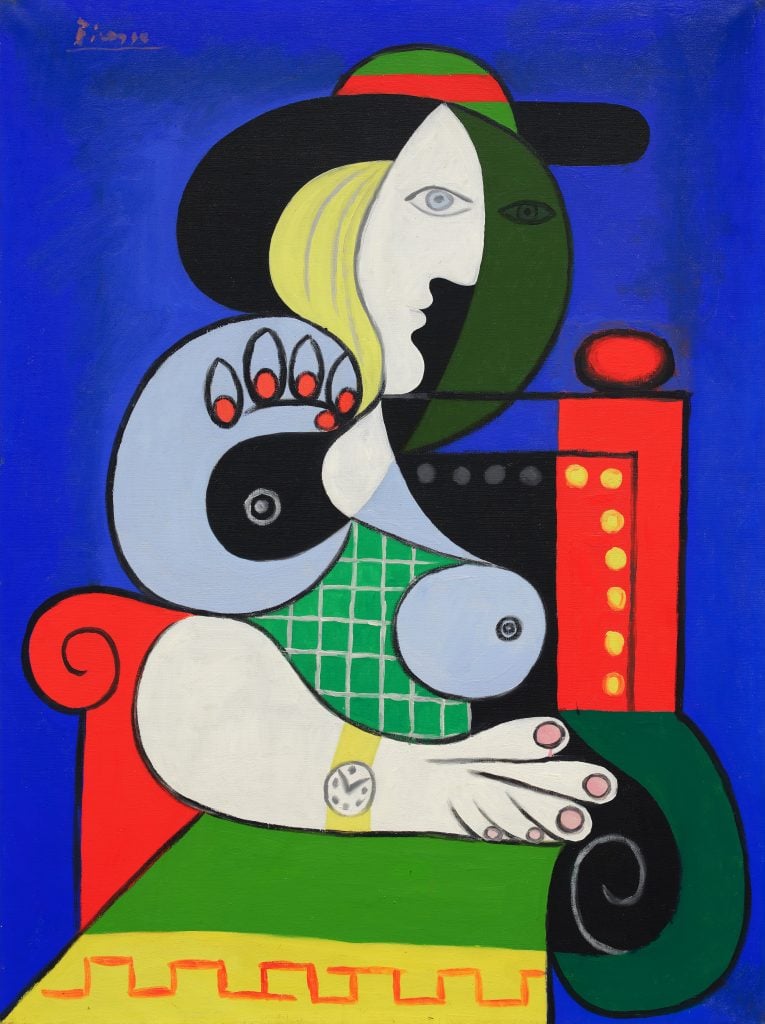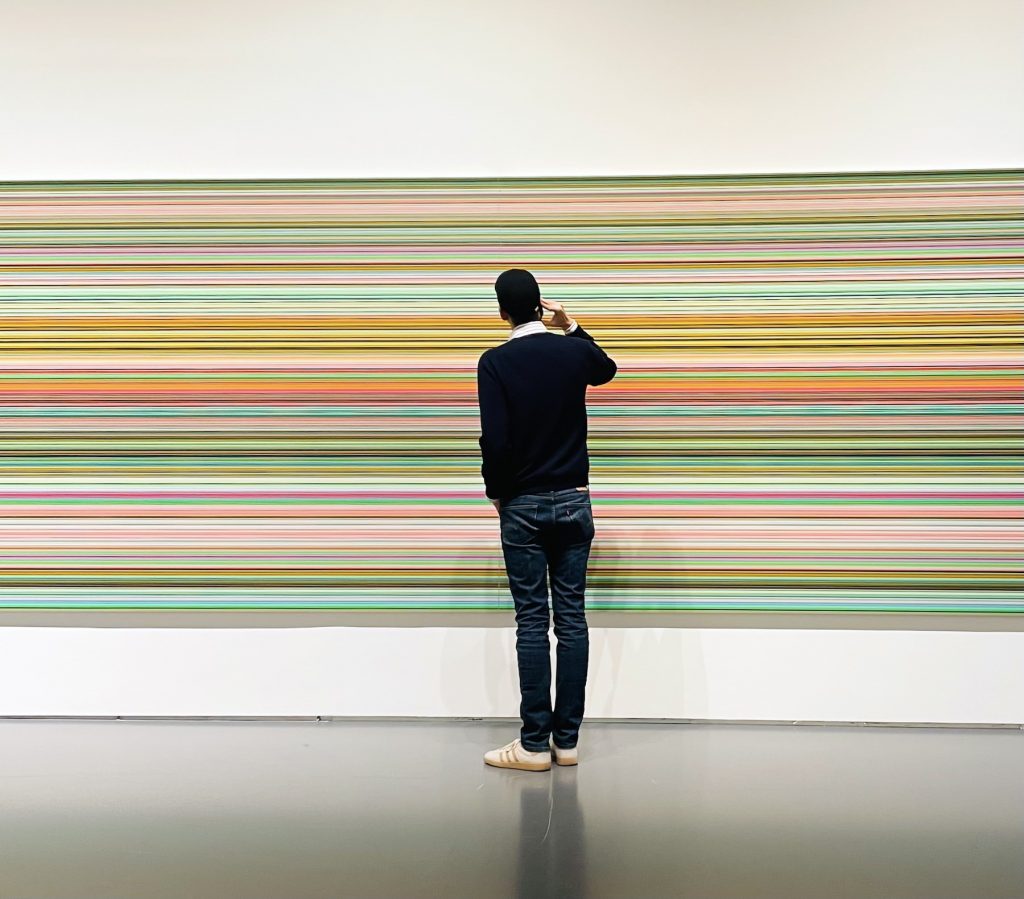The Art Detective
How Dealer Leo Koenig Scored the Steal of This $2.2 Billion Auction Season
Looking for lessons in the recent $2.2 billion round of auctions.

Looking for lessons in the recent $2.2 billion round of auctions.

Katya Kazakina

And just like that, the November 2023 auction season is behind us. Trepidation filled the air heading into it: Will the secondary market collapse under the weight of economic volatility and geopolitical turmoil? Will it shrug off current events—as it had so many times in the past—and continue marching to its own rarified tune?
The $2.2 billion worth of art sold over the past two weeks made one thing clear: This market still has a heartbeat. Sometimes it raced like crazy, others… not so much. But given the headwinds, the performance delivered by Sotheby’s, Christie’s, and Phillips was nothing short of heroic. They used every weapon in their arsenal—massive guarantees, profit sharing, and withdrawals—to ensure the best possible outcomes… and optics. Together, the three houses surpassed their presale low estimate of $1.8 billion (final prices include auction fees; estimates don’t).
“They worked darn hard and they were very successful in selling the works they had on consignment,” said Thomas Danziger, an attorney who represented several key sellers this month. “The bigger question is, did the auction houses make any money? And how reflective are the auctions of the broader art market?”
All three auction houses are privately owned, so we may never know for sure. Their spin machines are in high gear, with all the predictable (and sometimes misleading) superlatives. Still, there’s no denying it: The trading is thinner. It’s a buyer’s market and many savvy participants got below-market deals or outright steals (more on that later). Last November’s auction season reached a record $3.2 billion, augmented by the Paul Allen collection; in November 2021, the three houses sold $2.3 billion worth of art.
Auction executives are whispering that profitability is way down this season at all three houses because of how much risk they have taken on to win the consignments. The word on the street is that Christie’s made the most money despite having lost major collections, including the Emily Fisher Landau estate, to Sotheby’s, and coming second in terms of sales (Christie’s generated $864 million in total sales to Sotheby’s $1.2 billion; Phillips tallied $175 million.)

Pabo Picasso. Femme à la montre (Woman With a Watch) (1932). Courtesy Sotheby’s
Sotheby’s earned the bragging rights to the biggest total and the most expensive artwork: Pablo Picasso’s 1932 Femme à la montre (Woman with a Watch), which fetched $139.4 million. But despite its caliber, the Fisher Landau collection wasn’t a home run. The sale generated $425 million, falling short of the guarantee Sotheby’s had given to win the trove, according to multiple sources in the art market.
There remains a multi-million-dollar delta between that guarantee (estimated by market participants to be around $440 million to $450 million) and Sotheby’s tally to date. More lower-value Fisher Landau items will be sold in the future, including paintings, photographs, and furniture.
“They may break even in the end,” a person who does business with the auction house said.
The situation underscores the predicament auction houses regularly find themselves in: They often have to overpay for the privilege of selling the most coveted art. Sometimes they get away with it. Sometimes they don’t.
If nothing else, this recent round of auctions underscored that we are in a buyer’s market and that tough times present opportunities for those who have cash and market savvy. Saddled with guarantees, auction houses sold works by 20th century giants including Mark Rothko, Pablo Picasso, Andy Warhol, Robert Rauschenberg, and Jean Dubuffet for way under their low estimates. The buyer of Jean-Michel Basquiat’s Self-Portrait as a Heel (Part Two) got a $3 million fee for placing an irrevocable bid on the 1982 painting that hammered at $39 million and should have been $45 million with buyer’s premium but was recorded at $42 million. Ditto the guarantor of Julie Mehretu’s record-setting painting, who shaved more than $500,000 off the final price.
Possibly the best deal of the season belongs to New York art dealer Leo Koenig.
Earlier this month, he was surprised to discover Gerhard Richter’s monumental Strip painting on Sotheby’s website, slated to be sold during its contemporary art evening sale on November 15. Estimated at $2 million to $3 million, the 2015 work was a field of densely arranged, dizzying color strips, stretching over a 36-foot-wide surface.
Richter began working on the series in 2010, using computer editing software to distort his 1990 work, Abstraktes Bild (724-4), beyond recognition. This is how Sotheby’s describes the work in its online catalog:
Dizzying polychromatic striations of lilac, chartreuse, emerald and scarlet excite and exhaust the eye in Gerhard Richter’s monumental Strip from 2015. In this late and staggeringly large gesture of artistic invention, Strip synthesizes the most important breakthroughs of Richter’s previous output: the blurring device of his Photo paintings, the regimented arrangement of color of his Farbens and the totalizing sensory immersion of his Abstrakte Bilder.
Koenig has shown and sold works by Richter for two decades. He has seen other Strip paintings before, mostly in institutions: At the Met Breuer during Richter’s short-lived retrospective that opened on the eve of the pandemic; at the Beyeler Foundation in Basel.
This particular Strip had been prominently displayed on the booth of Marian Goodman gallery at Art Basel fair in 2016, priced at 3 million euros. The work made the news after it was acquired by Chinese mogul Liu Yiqian, who was on a buying spree in those years.

Leo Koenig inspects his painting. Photo courtesy Leo Koenig.
When Liu emerged as a seller this fall, Sotheby’s won the prestigious consignment from his private institution, the Long Museum in Shanghai. Like many other consignments, it was backed by the in-house guarantee. And now Sotheby’s was on the hook.
“I was very surprised to see a work of that importance come up at auction,” Koenig said this week.
He knew he was going to go for it as soon as he saw it in person at Sotheby’s—and decided to offer Sotheby’s an irrevocable bid. He also knew that taking on the work of such scale and fragility can be a logistical nightmare. So, he had a specific number in mind that would make it worth his efforts.
“I am a dealer,” Koenig said. “I am going to buy something in the shrewdest way possible. My number was low in comparison to what this work would be on the primary market.”
He offered $1 million, exactly half of the low estimate. “I was pretty sure they would tell me to go screw off,” Koenig said. To his surprise they didn’t.
It turns out Koenig was the only person seriously interested in the work and Sotheby’s was willing to accept his lowball offer rather than risk buying it in and keeping the large-scale Strip in its inventory (and storage) for years.
“I never thought they were for mere mortals,” Koenig said. “Now I own one of them.”
He plans to truck the work, which consists of four panels, to his gallery in West Palm Beach, Florida, which is large enough to display it. (It’s too big to be shown at his gallery on Madison Avenue, he said).
Koenig is still bullish about Richter’s market.
“The fact that three-quarters of the value was shaved off has to do with its scale,” he said of Strip. “This is an institutional piece.”
Eventually he’d like to resell it. “That’s what I do,” Koenig said. “I don’t have an immediate plan. I will be thrilled to have it in my orbit for a little bit.”